11 Totally Doable Ways to Score Cheap Produce (We’ve Tried Them All!)
Slash your grocery bill big time when you score cheap produce!
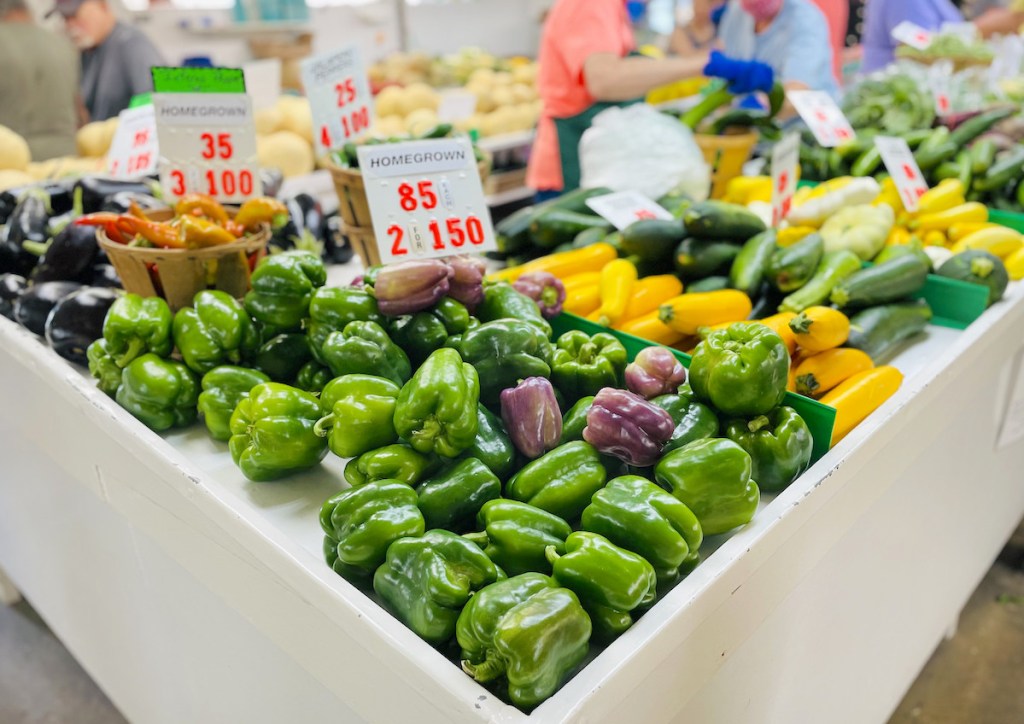
Check out these un-BEET-able ways to score cheap produce at the grocery store! 🫑🥕
Start the New Year off fresh with a head full of great ideas and a pocket full of dollars saved when you try these practical tips to score cheap produce!
While fruit coupons may be hard to come by, you’ll be surprised how easy these tricks are so you can still prepare healthy meals for your family without breaking the bank!
1. It doesn’t get any cheaper than starting your own home garden.
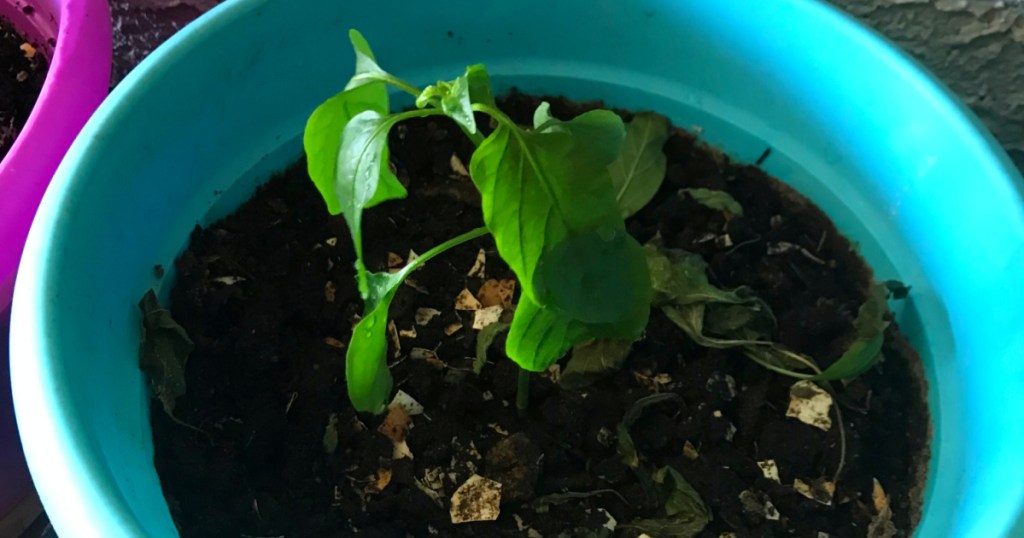
There’s nothing better (or cheaper) than growing and picking fresh, homegrown fruits and veggies! If you’re new to gardening, consider starting with easy-to-grow seeds (like cucumbers or peas). You can also place vegetable scraps that can easily grow in water by a window, such as green onions, lettuce, or celery.
No green thumb? Hip readers are also big fans of these AeroGardens that practically grow fruits and veggies with little effort!
We tried a couple of these methods and they REALLY do work!
- Keep the white part of the onion with any intact roots, and place it into a small glass with water. After a few days, green shoots will start to emerge from the tops of the bulbs. After that, they’ll grow very quickly. You can keep them in water for a while, but they will do best when transplanted to a pot with soil before they start to weaken.
Regrow Romaine Lettuce from a Stem
- That’s right! Just cut off the bottom from the head of lettuce and place it in a bowl of water near a window with sunlight. Replace the water every 1-2 days. Within a few days, you’ll have small leaves sprouting up. With this method, you will not regrow a full-sized head of lettuce, but you can enjoy the smaller leaves on a sandwich or in a personal-size salad.
- Slice about 2″ from the root end of a bunch of celery and place it in a shallow bowl of water. Place the bowl near a window with sunlight. After a few days, you should start seeing small leaves emerging from the very center of the top. In about a week, you may see small stalks and leaves. Plant the celery in potting soil or directly into your garden.
Did you know? The way you store your produce makes all the difference too!
Consider soaking carrots in a dish of water until you’re ready to use them and tomatoes are actually best left out on the counter, NOT the fridge! 😱 Check out these helpful hacks to extend the life of your strawberries too!
Also, growing herbs indoors for fresh year-round use is easy and fun to incorporate into cooking (check out our Stacked Herb Garden idea). Or, if you have the space in your backyard, using a Raised Garden Bed is an easy and affordable way to set up your home garden – and you can do it in under an hour! These garden beds are low-maintenance, weather-resistant, and will not rot, crack, or peel.
Hip Tip – Want to give gardening a shot? Select libraries have packages of seeds that you can score FREE with your library card! You can also snag four packets of seeds for $1.25 at Dollar Tree during the gardening season.
2. Join a community garden.
Have a green thumb but don’t have space to grow a garden? Consider purchasing a plot in a community garden in your area where you can conveniently grow your own produce.
As an idea, there are two community gardens in my area with plots ranging in price from $12-$20 per year for residents – and they even include water and a rain harvesting cistern (garden plot prices will vary by region).
3. Shop locally or at farmer’s markets.
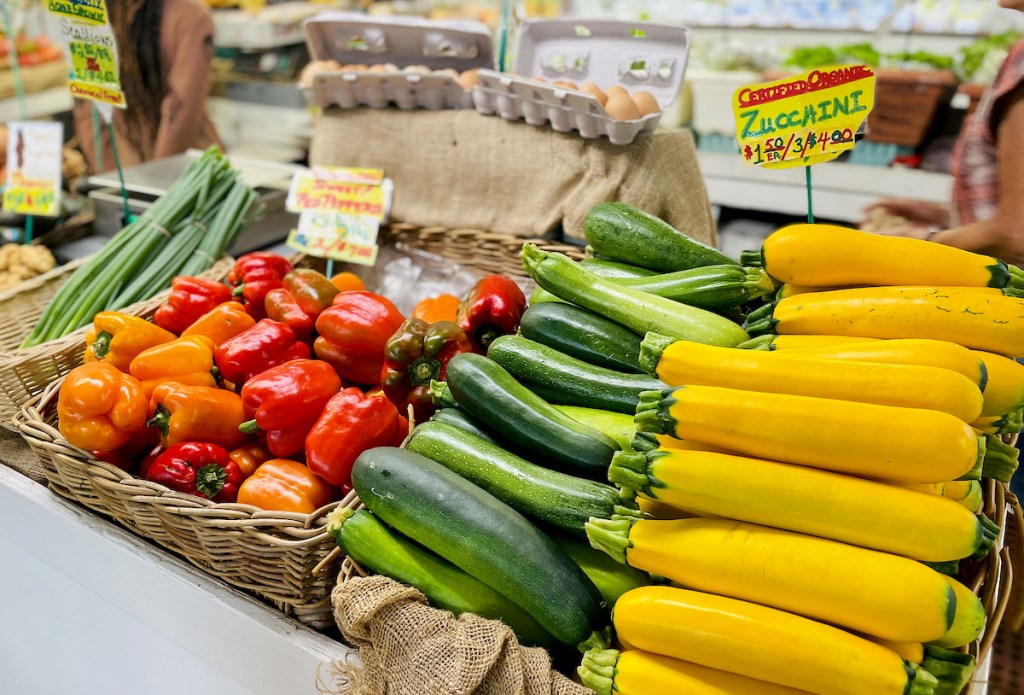
While farmer’s markets can vary greatly in regards to availability and pricing, you can often get really good deals and some of the cheapest fruits and veggies. Just visit near the end of the market, when a seller is more likely to lower prices to get rid of remaining items.
Hip Tip: View this map to find a local farmers market near you.
Also, if you live near a Sprout’s Farmers Market, they offer fantastic weekly sales on produce, especially on Wednesdays when their weekly sale ads overlap (you score deals from BOTH ads)! As an idea, they are currently offering 2 for $5 Haas Avocado 6-count bags and 2 for $6 Organic Gala or Pink Lady Apples 2lb. bags!
4. Yes, you can score cheap produce online.

Many of our readers LOVE ImperfectFoods.com and another popular option is MisfitsMarket.com. Both online grocers take the ‘ugly’ produce and surplus that farmers can’t sell, and offer it to you for a HUGE discount. Not to mention it’s delivered right to your doorstep! AND, we love these sustainable options as they reduce food waste too.
Speaking of ‘ugly’ fruit…
Consider asking your local in-store grocer for ‘seconds‘. This is a term used for produce that’s unsellable, such as a bruised peach, misshaped pepper and they will likely sell it to you for huge discounts instead of taking the loss.
5. A food co-op or CSA could be your golden ticket to cheap produce.
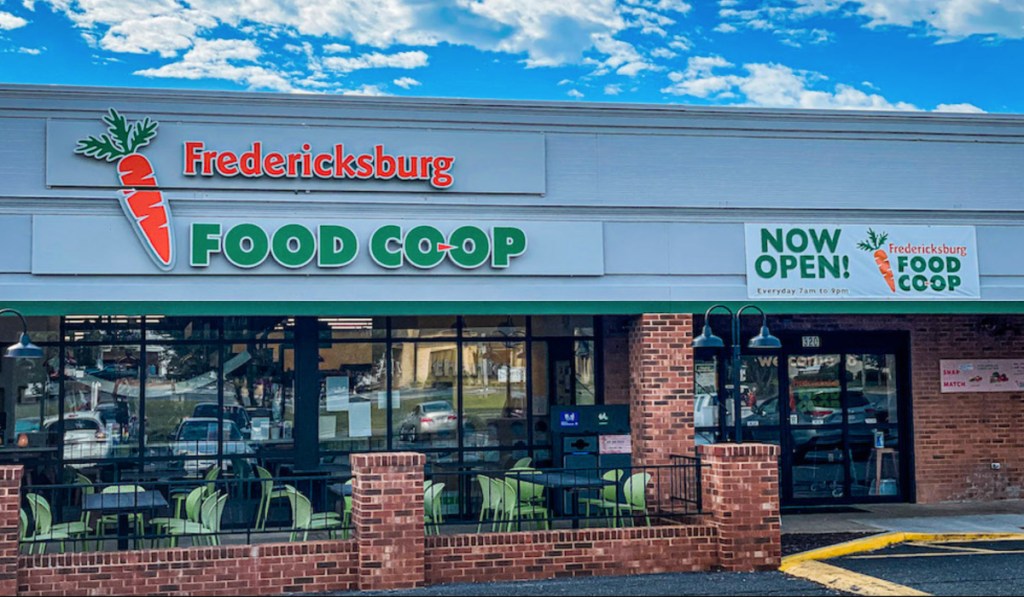
Let garden weeds be someone else’s problem! If you’re lacking in gardening skills, or don’t have space (or energy) to grow fresh foods yourself, food co-ops and Community Supported Agriculture (CSA) Groups are a great way for you to purchase produce from area farmers.
- Community Supported Agriculture: Under this model, a farmer offers a certain number of “shares” to the public. Typically the share consists of a box of produce, but other farm products may be included. Interested consumers purchase a share (“membership” or “subscription”) and in turn receive a box (or bag/basket) of seasonal produce each week throughout the farming season.
Find a local CSA near you. You can also try searching “community supported agriculture” or “CSA” plus your city/state.
- Food co-ops: Food cooperatives are worker- or customer-owned businesses that provide high-quality grocery items to their members, usually for good prices. Co-ops can take the shape of buying clubs or even retail stores. Food co-ops are committed to consumer education, product quality, and member control, and they usually support their local communities by selling produce grown locally by family farms.
Check Local Harvest or this co-op directory to find a food co-op near you.
6. Pick-your-own produce spots make for the cheapest fruits (& most fun too!)
No farmers market nearby? Check for local farms where you can pick your own fruits and vegetables. It takes less time than growing your own, and you can still get better deals than at a grocery store. Plus, it makes for a great family-friendly activity!
To find a local farm that offers the option to pick your own produce, search your city and state here to view your options (call ahead to confirm the hours of operation before you head out). Note that depending on the time of year, the farms in your area will offer different fruits and vegetables. If you prefer to pick a specific fruit/veggie, call ahead to confirm that this item is in season.
Before you go, ask about the cost in advance and available methods of payment, since many farms only take cash or checks. Don’t forget to dress appropriately and bring sunscreen, bug spray, bags, and plenty of water to drink! You may also want to bring a wagon (if you have one) to hold kids and produce.
7. Remember to only buy produce that’s in season.
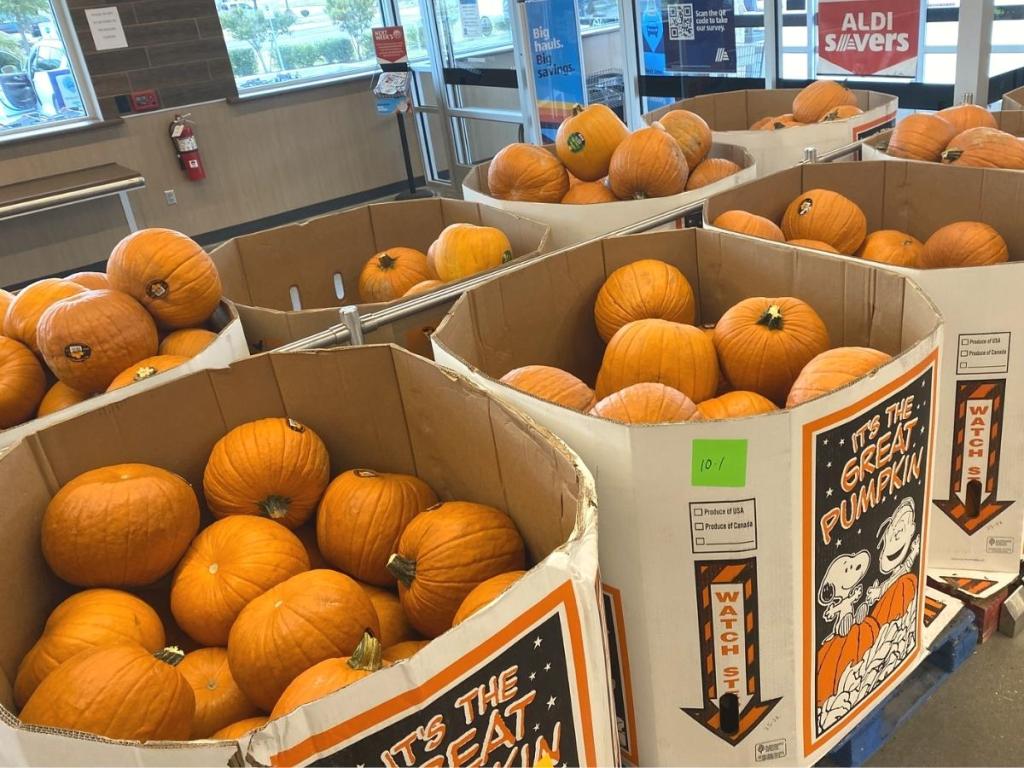
You already know that seasonal food is fresher, tastier, and more nutritious than produce consumed out of season. Did you also know it’s also cheaper since it’s most plentiful?
For the best flavors and dollar savings, buy fresh fruits and vegetables when they can be purchased directly from a local grower shortly after harvest. Use this cool Season Food Guide to find out what’s in season right now where you live.
Crops picked at their peak of ripeness are better tasting unlike out-of-season produce, which is harvested early for shipping and distribution to retail stores. Plus, studies have suggested that fruits and vegetables contain more nutrients when allowed to ripen naturally on their parent plant, making them softer and sweeter!
8. Use coupons and cash back apps to score cheap produce.
A great way to score cheap produce is to keep an eye out for ALL printable coupons for fruits and vegetables. Print them as soon as they pop up since they’re rare and never last long!
Where to find produce manufacturer’s coupons:
- OrganicGirl.com
- Fresh Express (sign up for emails to receive occasional emails with coupons)
- Peelie coupons found on other products (i.e. – save on bananas when you buy Vanilla Wafers)
- Coupons on “quick-sale” packages close to expiration
Produce store coupons:
- Target Circle – you can often find offers for fresh produce at Target
- Whole Foods Market digital coupons – in the past they’ve offered $5 off $25 fresh produce coupons. Plus, Amazon Prime members can save an additional 10% off sale items at checkout!
- Kroger/Safeway/Ralphs/Sprout’s Farmer’s Market apps – be sure to check your store apps for savings on produce
Cash back rebates on fruits and vegetables:
- Ibotta app – get cash back on groceries purchased at select stores – including fresh produce!
- Fetch Rewards app – earn points for any grocery purchase!
- Checkout51 app – get cash back on produce purchased at ANY grocery store!
- SavingStar – get cash back on fresh produce, like bananas.
- Makeena app – get cash back offers on fresh organic fruits and vegetables!
Hip Tip: If Ibotta and Checkout51 both have offers for bananas, be sure to submit for both rebates! Then, submit your receipt in the Fetch Reward app to earn points toward rewards! You can really stack the savings when you do this!
9. Shop at discount grocery stores.
If you have a discount grocery store nearby, such as ALDI or Grocery Outlet, you can usually find great deals on cheap produce if you keep your eyes peeled. For instance, at ALDI, you may be able to find fruits and vegetables on a BOGO sale (buy one, get one free) whenever they’re about to remove them from the shelves. Just be sure to examine the packaging and produce items closely to ensure they’re good quality.
And, if you end up buying a product from ALDI and not liking it, not only will they replace your product, they’ll also refund you the money for that purchase as part of their Twice As Nice guarantee!
What’s with Wednesday??
No matter where you shop, most grocers discount their old produce when new shipments arrive mid-week. So, as a general rule of thumb, if you’re looking for the cheapest fruits and veggie deals it’s smart to shop on Wednesdays!
10. Score cheap produce with pre-bagged options– but be sure to weigh it first!
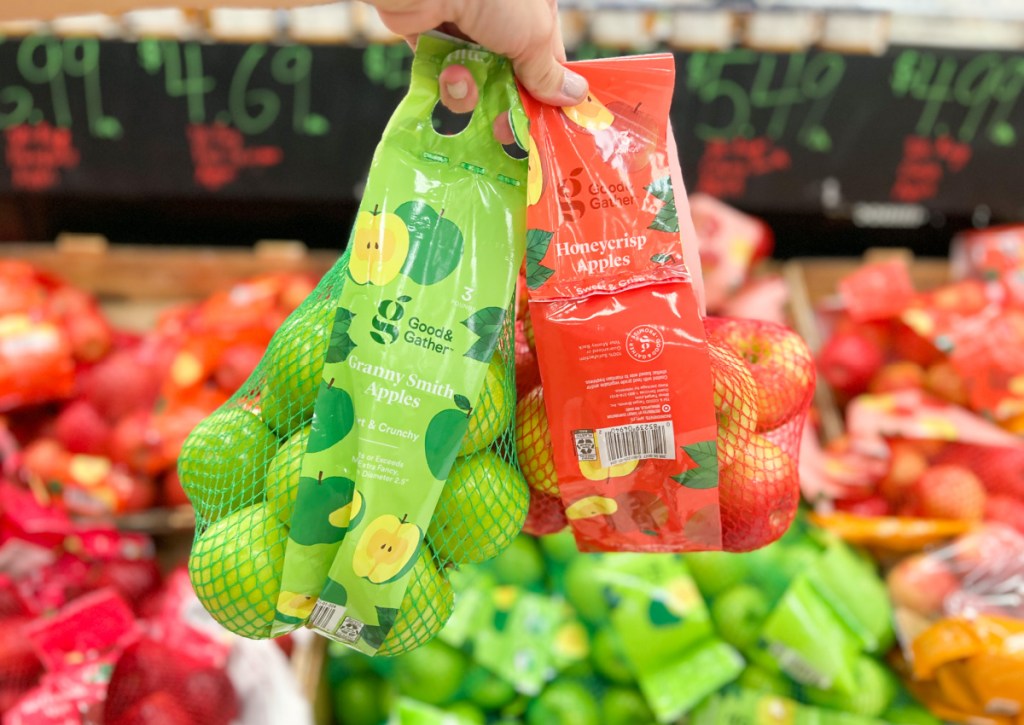
Seems silly, but it adds up… To get the most bang for your buck, be sure to use the produce scale to weigh the bags of produce you plan to buy (apples, potatoes, etc). For instance, a 5 lb. bag of apples actually may weigh more than 5 pounds since it is packaged by volume and not necessarily weight.
Producers won’t put half an apple in the bag to get it to reach at least 5 pounds, so you may save a little by purchasing a bag, rather than choosing individual items and paying by the pound.
Also, produce in the refrigerated section is often sprayed with an occasional mist of water. This may seem trivial, but that water can accumulate and weigh down your produce. Gently shake off your fresh veggies before placing them on the scale to save a bit at the register! 😉
11. Don’t pass by your local Asian Market without scoping out their produce section.
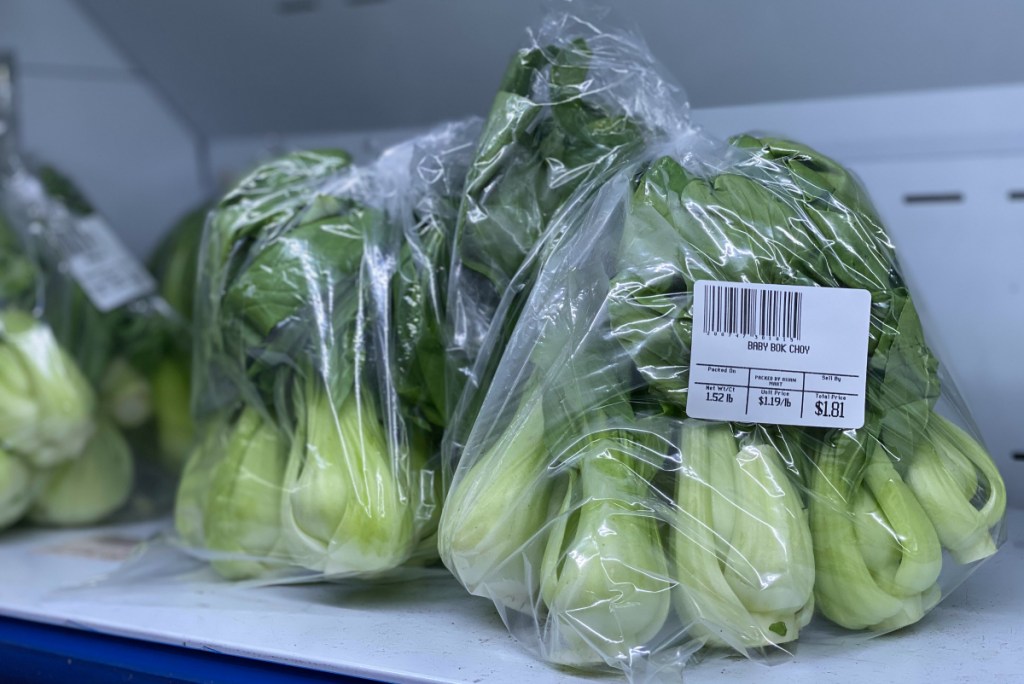
You’d be surprised how deeply discounted produce can be at your local Asian market! Plus, they often have a wide variety of unique fruits and veggies like lychees, persimmons, lemongrass, and more exotic produce to choose from!
We’ve got even more helpful tips on how to save at your local Asian market!
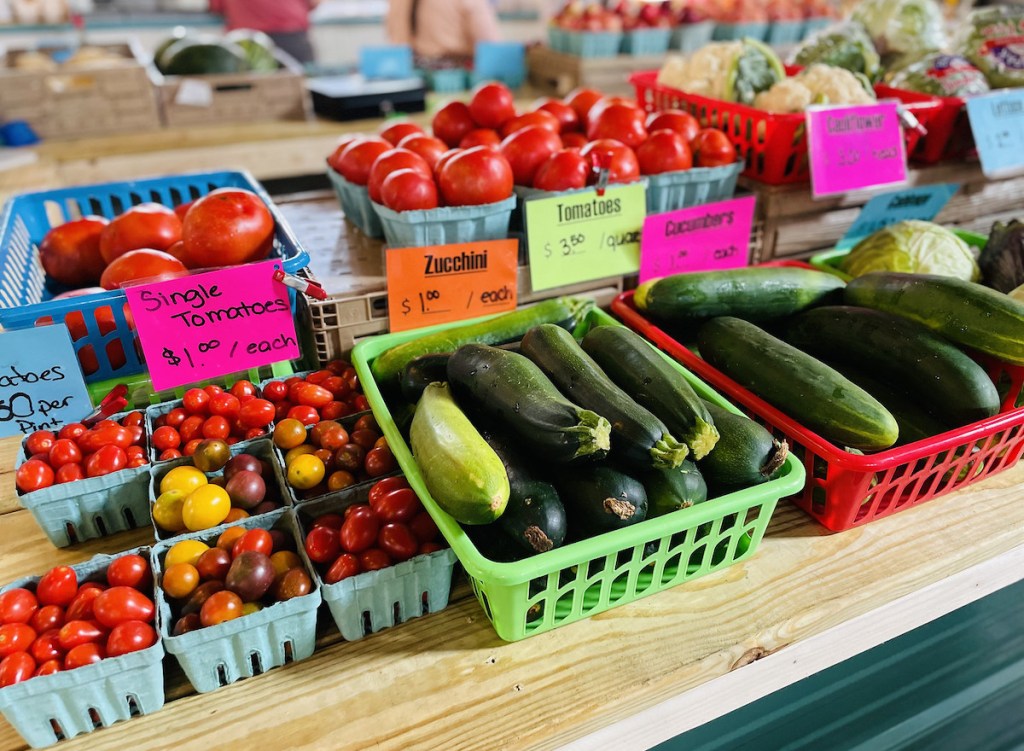
How do YOU score cheap produce? We’d love to hear your ideas! 🥕🍊🌽
Save on everything on your grocery list with these helpful tips!

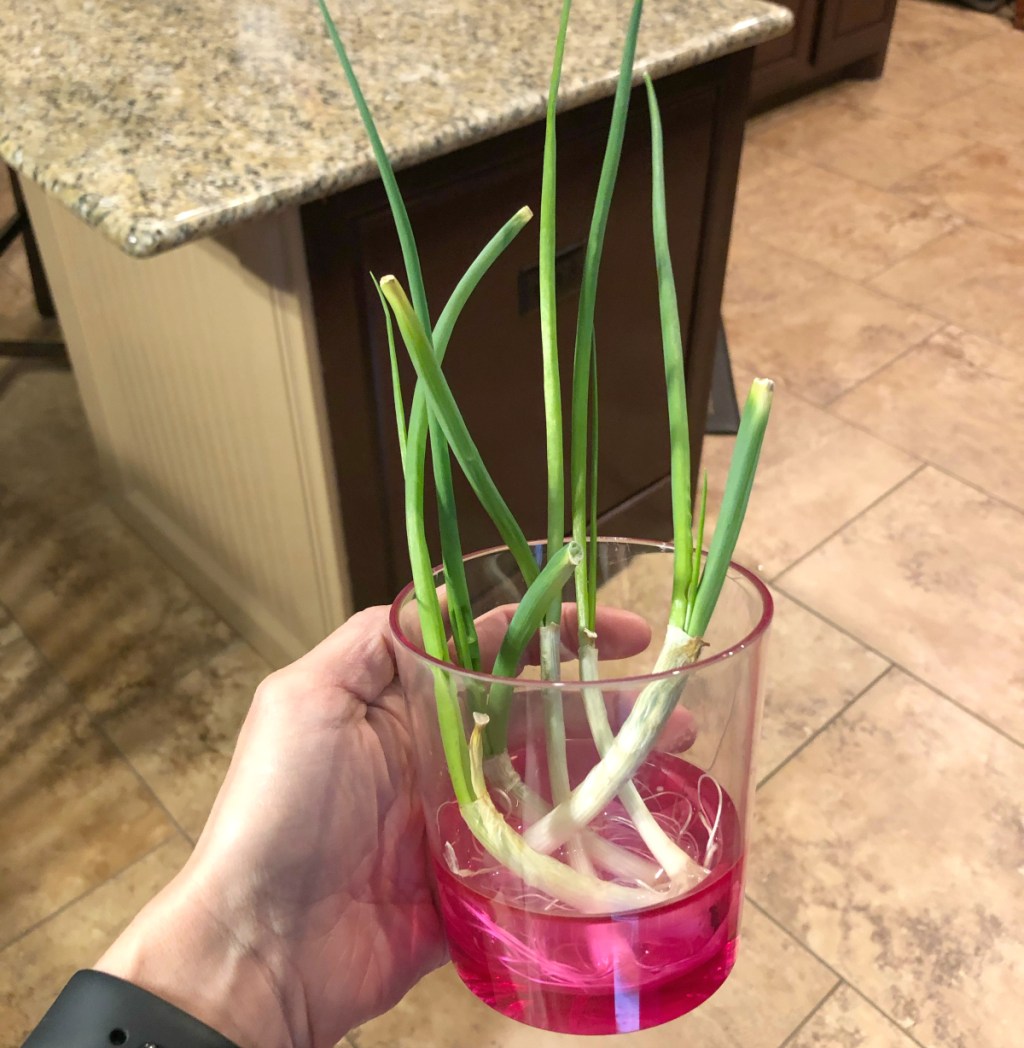
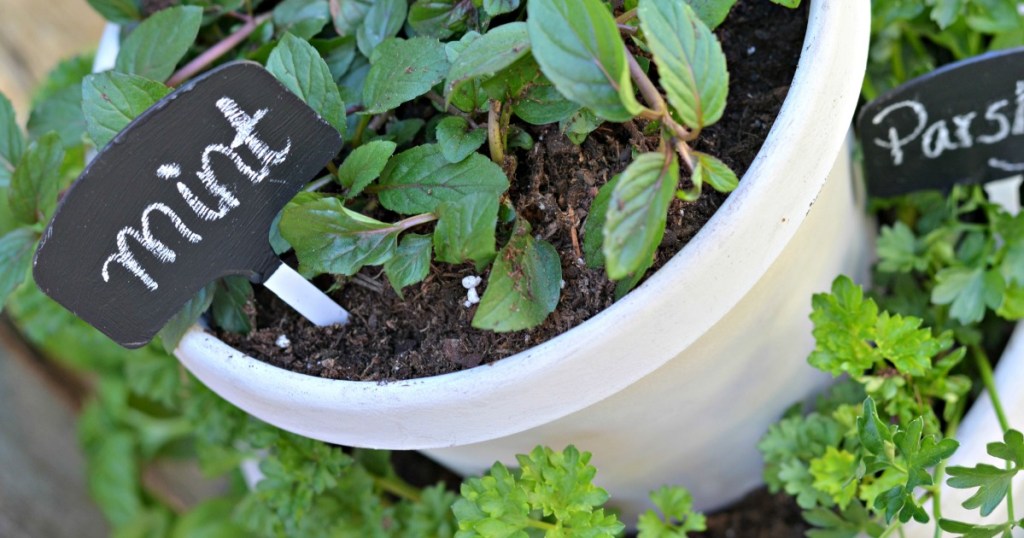
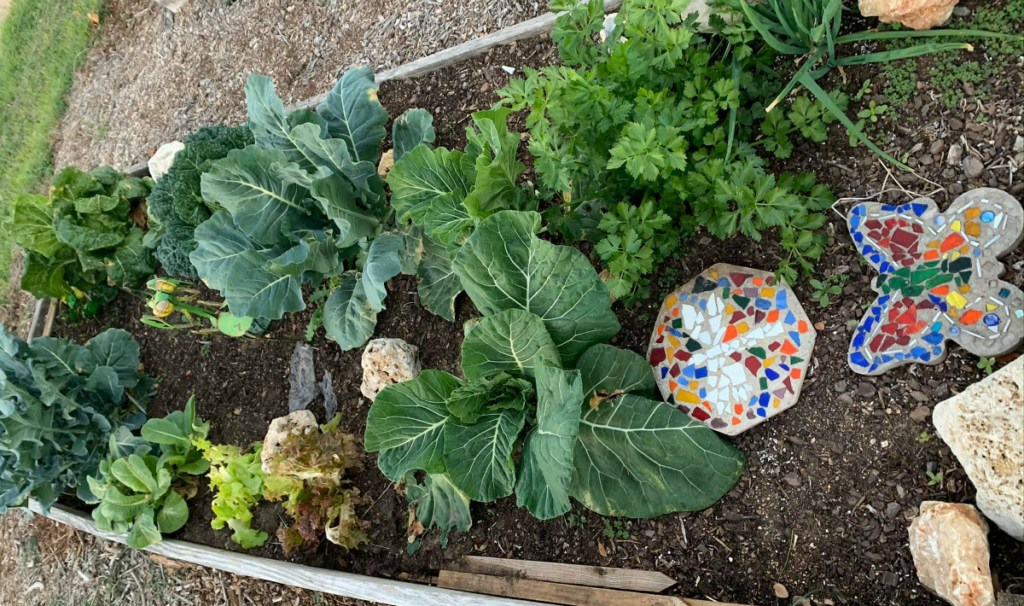
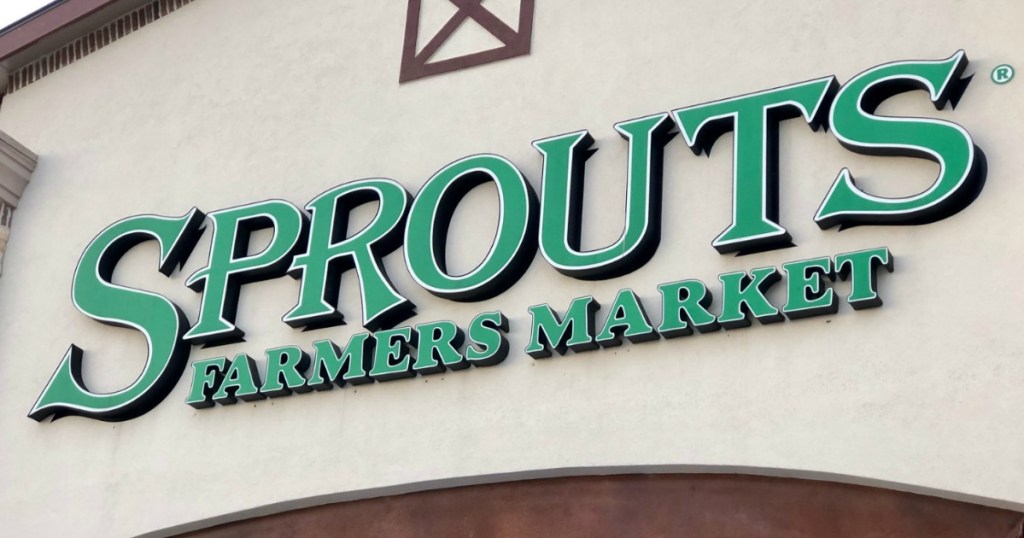


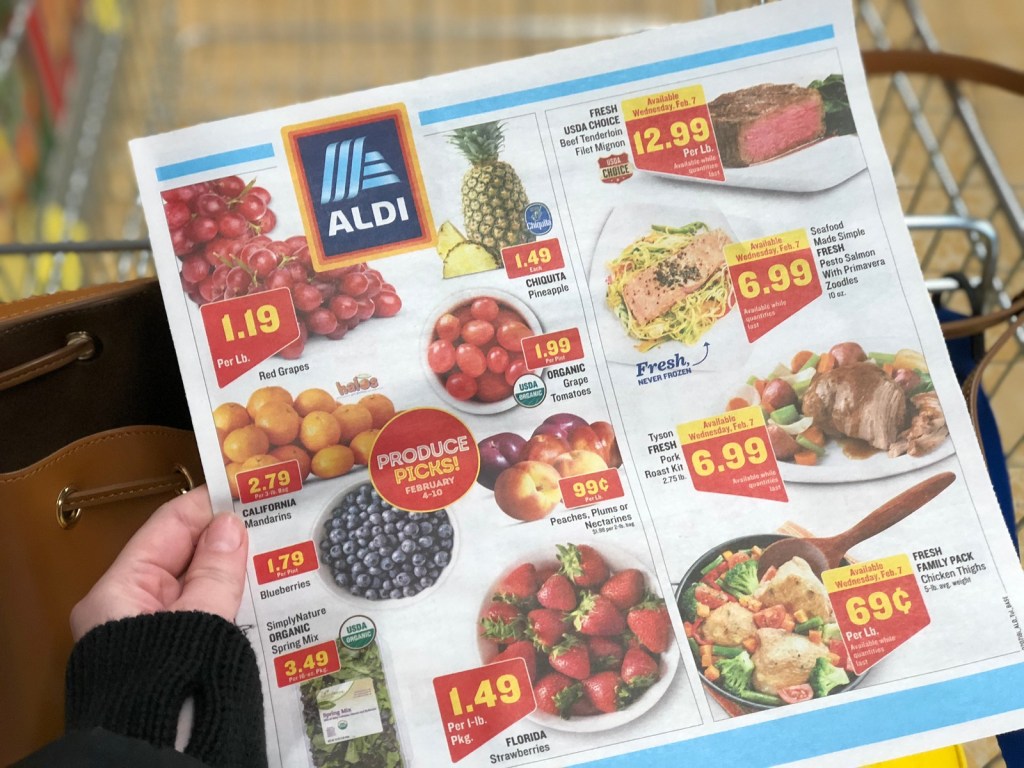
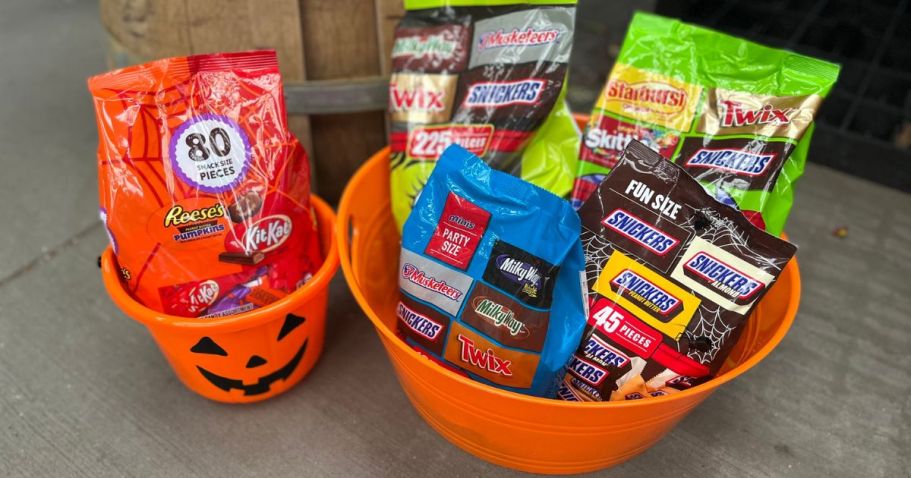
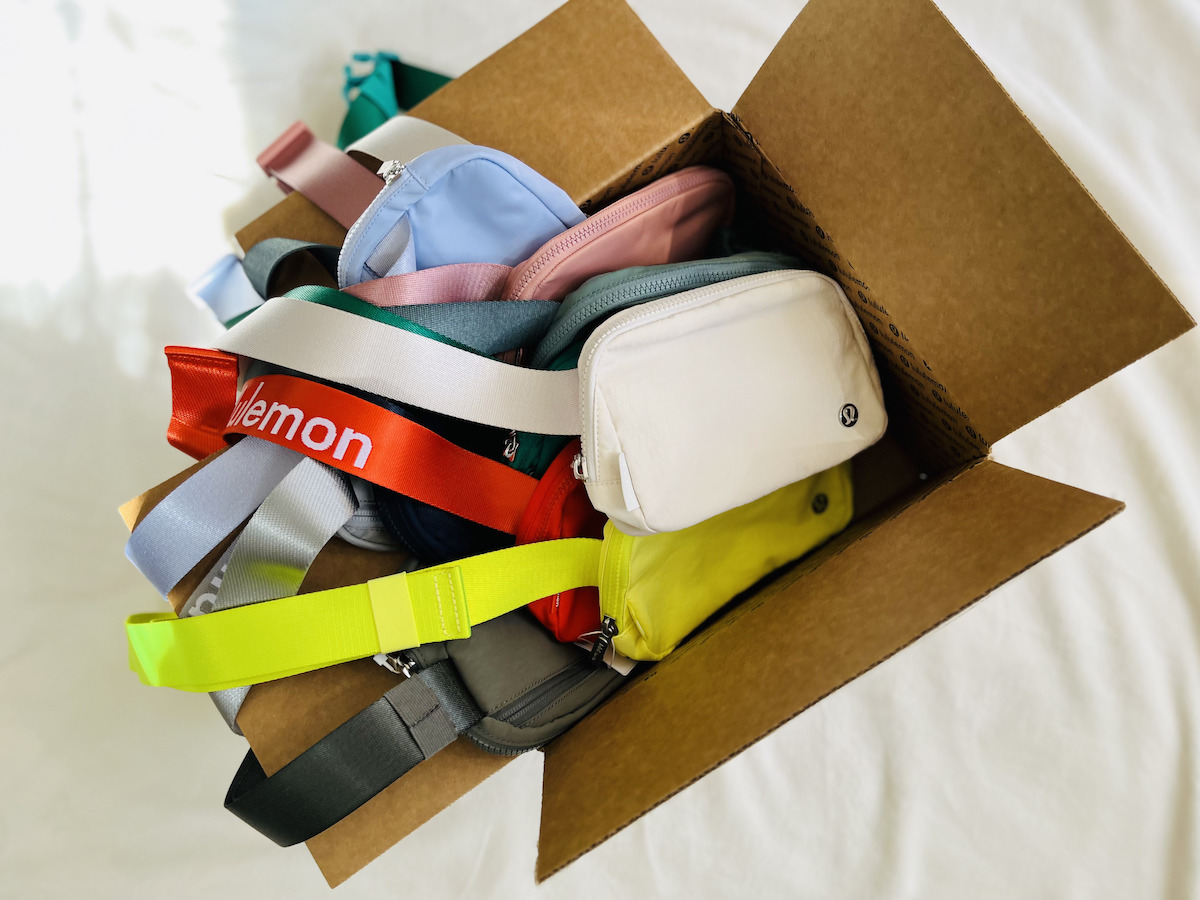


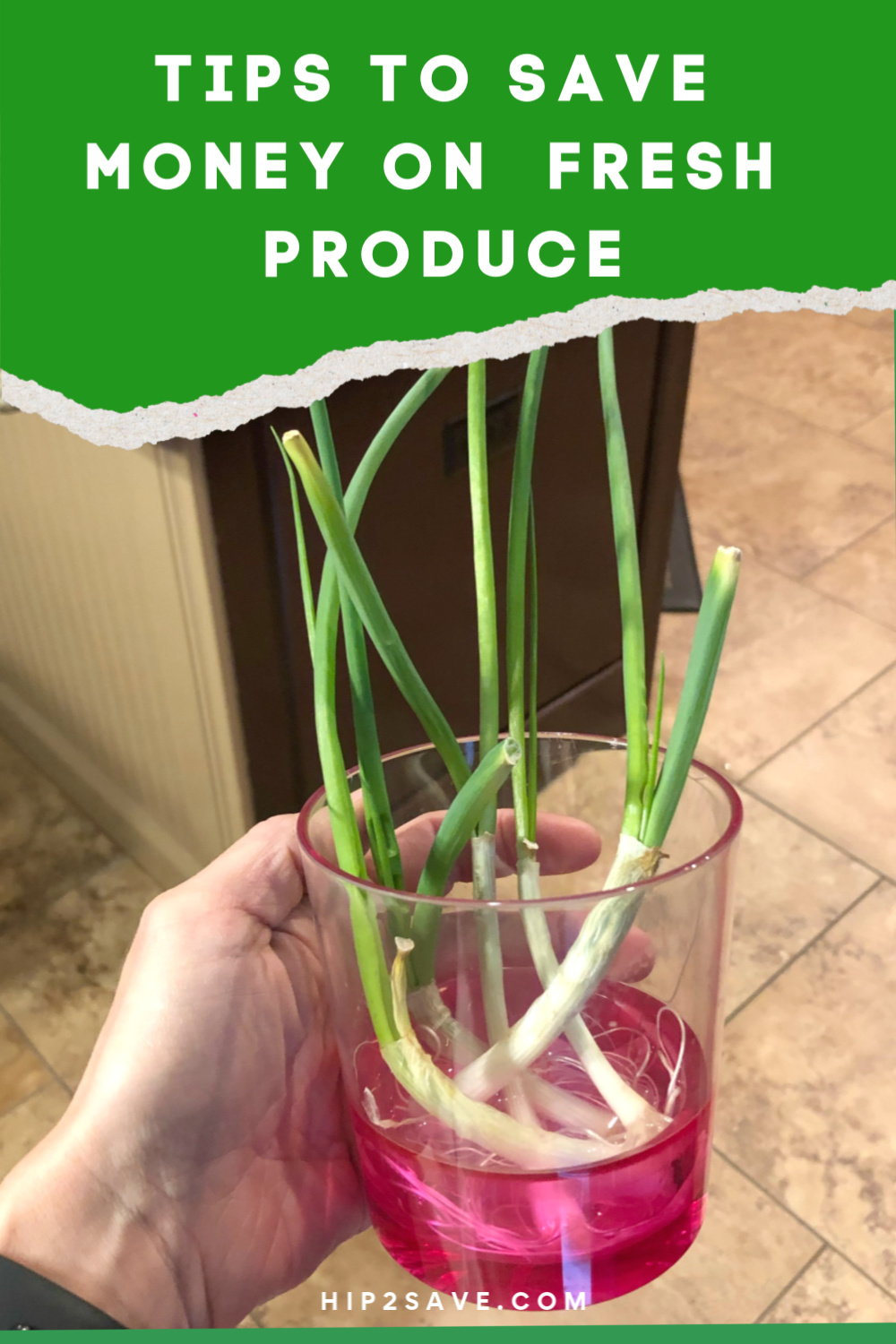


Thank you for all these awesome ideas, I will definitely be taking advantage of some of them ASAP!
You are SO welcome, Mendy! Glad these tips will be helpful!
Check with your health insurance company for ‘Wellness Reimbursements’ too! We have a plan that gives up to $100 per person over 18 in your house to make healthy choices. We use it for our CSA which we split with another couple. After our reimbursement, we spend about $6.00 a week to get 20 weeks of fresh veggies in the summer!
What a great tip! Thanks for sharing, Bethany! Good to know!
1. Grow microgreens in your kitchen window. They’re ready to eat in just a few days, and the cruciferous ones are super-charged nutritionally so that a small amount packs a big punch. You can grow them in a tiny bit of potting soil in a reused berry container, water with a spray bottle, and snip with scissors to harvest. 2. Check out programs like Top Box (https://topboxfoods.com )–they offer very low-cost subscriptions for prepaid, monthly boxes of produce, delivered by truck to churches for people to pick up. For example, the 14 lb. fruit box or 18 lb. veggie box costs $20, delivered to the drop-off point (church). The churches get a 5% donation for the trouble of hosting, since non-members can pick up at the designated points too.
How neat! Thanks so much for the helpful comment, Maggie!
I use imperfect produce (imperfectfoods.com), and it saves a fair amount on groceries! It forces us to try new veggies, to eat what’s in season, and to actually meal plan around our produce!
Yes, and our local hispanic supermarket is awesome on the price of meats, too.
I just wanted to add that learning how to store produce correctly has been a game-changer in our house. I was frustrated that my produce was seemingly going bad faster than we could use it. A few changes and I no longer had a problem. Some of my veggies are lasting months now versus a week! Here are a few changes I have made so far:
Wrap a head lettuce in a paper towel and place in a baggie (the paper towel absorbs the moisture instead of the lettuce which ruins it – if it’s a bag of mixed greens, I just work a paper towel into it.) This works with other greens and veggies that deteriorate with moisture too!
Soak carrots in water and keep in the fridge
Green onions should be done exactly as you mentioned above with regrowing them. Keeping them in a glass in water just maintains their freshness and they continue to grow.
Tomatoes are best kept on the counter and not in the fridge for long-last. It also helps to maintain the taste!
And I’m still learning (just googling) as I go…I’m sure there are more ways and different options for other veggies.
Wow! These are great suggestions! Thanks so much for taking the time to list these out! I’ll have to put them to use in my kitchen too!
If i wrap celery in aluminum foil, it lasts way longer too.
Very thorough article, thanks so much!
Wash fresh berries in a vinegar wash. Just add a capful of white vinegar to a bowl of cold water and dunk your berries in. Drain, then let dry on paper towel lined tray before refrigerating. Makes berries last a couple of days longer. They will not have a vinegar taste. Prevents molding.
I purchase most of my veggies at my local Asian market. The produce is simply beautiful and much cheaper than my local Kroger, Lidl or Aldi. Plus they have a huge variety of fresh herbs for very little money.
In addition, they have very interesting items that I have never seen before so it’s always a great education. I end up asking nearby shoppers for advice so it’s always a great learning experience too!
I’m not in a place that has CSAs, and I work when the local farmers market opens, but I’ve been using Imperfect Foods which takes fruits and vegetables that are misshapen or surpluses and sells them. It helps reduce food waste (good for the environment) and you get stuff cheaper. You customize what you want in the box, with a $30 minimum purchase, I think the only downside is that you have to pay $5.99 for shipping, so I’m hoping they figure out a way to reduce that cost. PLUS, when they messed up my order (they didn’t send me some pears that I bought) they refunded me the money, gave me a $4 credit on future purchases, and responded within the hour, so their customer service has been really awesome. So overall I’ve been really happy with them.
So wish there was an ALDI in Boulder, CO. I used to go all the time when in Memphis………miss it
I wish we had one in Little Rock, we have to drive 6 hours round trip to go to Aldi. I used to shop it all the time growing up in the 70s and 80’s with my mother. My mother went with her mother when she was little too. Great store.
I order from Imperfect Foods and love them. 20-30% off what I usually pay for produce and lots of it isn’t ugly!
I am also learning to use peelings, celery tops and roots, onion skins and the such to make homemade vegetable broth for soups. Keeping a ziplock bag in the freezer allows me to add what’s available till I have enough to simmer with water and seasonings.
Such a great idea, Dianne! Thanks for sharing that tip with us! 💞
Flashfood is pretty awesome!
Thanks for the helpful suggestion, Anna! 🥰
Great article written by this author – great shares from our Hip community – thanks!
You’re so welcome, Mary!💞 I’m loving this list too! Thanks a bunch for the super sweet feedback! 🤗
Thanks for the tips! I’d add that roadside farm stands (if you live in an area where they’re available) can be a great way to get affordable produce, especially if you get to know the grower and let him or her know that you’re willing to buy less-than-perfect fruits and veggies.
You’re so welcome, Beverly! Thank YOU for the helpful tip! Great idea. 🥰
The article should be updated to include today’s pricing. You cannot get Sprouts produce at those prices anymore.
Thanks for pointing that out! The pricing has been updated. 💞
Loved this post and all the suggestions in the comments too. Thank you so much H2S!
You’re most welcome, Elsie! 🥰
Kroger gives you catalina coupons off your next purchase and I use them on dairy and produce that don’t usually have coupons.
Thanks, Patricia! Such a great way to grab savings on diary and produce! 🙌💞
One thing I always try to remember is produce is expensive at times, but if your budget can handle it, it is so, so good for you. I try to say “no” more to the treats and sweets and “yes” to as many fruits and veggies as I can afford. Good produce is a good investment for your health.
– Along with Asian Markets, look up Hispanic Markets or any other international markets in your area. Many people don’t even know they exist, because of their “hidden” locations, so us Google to discover some gems in your area 😉
– Join a local Facebook group for plant lovers, where you can swap edible plants. In my area we have several Take a plant Leave a plant stands as well, and people even leave produce there.
– Check Facebook Marketplace for local people that sell produce. Some have gardens that produce more than they can eat, so they sell or even give away produce. You can also offer to barter. Like homemade baked bread in exchange for fresh tomatoes 🙂
– Learn how to preserve seasonal produce so you can buy more when you find a great deal. A dehydrator is a great investment, along with a pressure cooker for canning, a food saver, a deep freezer.
– Check the produce section for heavily discounted packaged produce that is no longer 100% fresh. I have gotten really good deals at my Winn Dixie.
– Frozen is often cheaper and depending on how you prepare the veggies, they can taste just as good. And you don’t have to worry about them going bad in the fridge.
– Potatoes are supposed to be very easy to grow as well. I haven’t had any luck with anything lately. Pests have been awful in Florida and every single plant I had was attacked by insects 🙁
Thanks so much for sharing your helpful tips and tricks, Roxy! I agree on the frozen produce option, I always like to have a few on hand to toss into a meal! 💖
Thanks so much for all of this great information! This is such a great post with so much useful information, and so many helpful comments, especially right now, when everything is priced higher. I really appreciate all the time and work put into this site! Thank you all!
You’re SO very welcome! 🤗 Thanks a bunch for the sweet feedback. 💞
Adding to this, freezing veggies helps me a lot as a single person who can’t go through food fast enough. I have less prep for meals and as long as I’m cooking the food, I don’t care if it’s frozen.
Also, I LOVE my dehydrator! Dehydrated spinach and kale are game changers for soup making because they don’t get as slimy, they keep their crisp shape and they are shelf stable. Also having things like dehydrated apples are great to throw on salads or snacks.
YES! GREAT tips, Caitlyn! 🎉🙌Thanks for mentioning these. I like to freeze veggies too if I can’t get through them before they might start to go bad. 🥰
Buy at farmer markets 30 minutes to close sometimes they sell perishables at striking a bargain price if you ask rather than transporting it back to farm.
Thanks for sharing this helpful tip, Dina! Glad to hear that you’ve been able to negotiate a good price on produce near you with this! 🤗